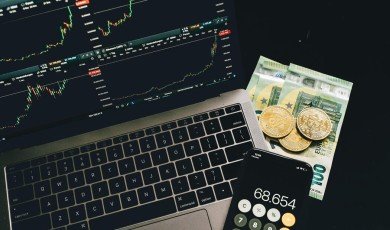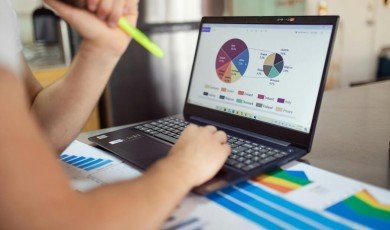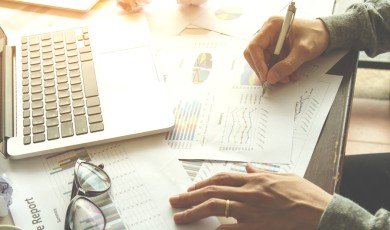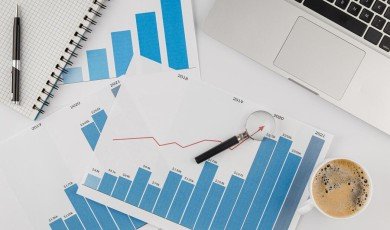Artificial intelligence is transforming how economists, analysts, and founders understand markets, forecast trends, and evaluate policy. What once required weeks of manual data collection, complicated modeling, and endless spreadsheets can now be done in hours through advanced automation and machine learning. This shift is not just reshaping academic research; it is also changing how organizations of all sizes design strategies, assess risk, and uncover new sources of growth.
While global institutions and major corporations are investing heavily in AI infrastructure, a growing suite of accessible platforms is bringing the same power to lean teams and founders. Specialized AI tools for small businesses now help users tap into sophisticated economic insights without hiring a full research department. From forecasting revenue to scanning policy changes and evaluating consumer sentiment, these tools are making data-driven decision-making more efficient and more affordable.
Main Research: Key AI-Driven Tools Reshaping Economic Analysis
1. Data Aggregation Engines for Real-Time Market Tracking
Economic analysis depends on timely and accurate data. Modern AI data aggregation engines scrape, clean, and structure information from thousands of sources: government databases, central bank reports, trade registers, job postings, satellite imagery, and even shipping records. Natural language processing (NLP) models then classify and tag this information, allowing researchers to:
- Monitor key indicators (inflation, employment, trade flows) in near real time.
- Identify emerging trends before official reports are published.
- Reduce human error in data entry and manual collection.
This automated data pipeline compresses weeks of work into hours, ensuring that economic models are built on the freshest, most complete information available.
2. Machine Learning Forecasting Models for Economic Indicators
Forecasting remains at the heart of economic research, from predicting GDP growth to estimating consumer spending. Machine learning models—such as gradient boosting, random forests, and deep neural networks—enhance traditional econometric approaches by:
- Handling nonlinear relationships and complex interactions between variables.
- Incorporating a wider range of data, including high-frequency financial and behavioral signals.
- Updating predictions dynamically as new data streams in.
These models help policymakers anticipate downturns or overheating, support investors in pricing risk, and give founders more reliable revenue and demand projections for planning and fundraising.
3. NLP Systems for Policy, News, and Regulatory Analysis
Economic outcomes are heavily shaped by policy decisions and regulatory changes, but tracking their impact manually is labor-intensive. NLP-powered platforms now read and interpret:
- Government bills, budget documents, and regulatory notices.
- Central bank speeches, monetary policy statements, and meeting minutes.
- News articles, research papers, and corporate disclosures.
By extracting key entities, detecting sentiment, and summarizing policy directions, these systems help researchers and businesses quantify how decisions may influence sectors, pricing, or access to credit. They also flag upcoming proposals so organizations can respond before changes take effect.
4. Behavioral Analytics and Consumer Sentiment Platforms
Understanding how households and consumers feel is crucial for anticipating spending, saving, and investment behavior. AI-driven behavioral analytics combine social media posts, search trends, online reviews, and survey responses to construct detailed sentiment indices. This allows economic researchers to:
- Track confidence levels across demographics, regions, or industries.
- Study reactions to price changes, new products, or policy announcements.
- Model how shifts in sentiment may translate into real-world activity.
The same capabilities help teams refine marketing strategies, pricing structures, and customer communication, linking economic theory with practical decision-making on the ground.
5. Agent-Based and Simulation Platforms for Scenario Testing
In complex systems, small changes can produce big, nonlinear effects. Agent-based modeling tools use AI to simulate millions of individual decision-makers—households, firms, banks, or governments—interacting in a virtual environment. Researchers can:
- Test how different policy mixes might influence inequality, employment, or growth.
- Explore what-if scenarios, such as shocks to energy prices or supply chains.
- Study network effects, contagion, and feedback loops in financial systems.
These simulations complement traditional macro models by revealing patterns that are difficult to capture with aggregated equations alone, providing richer insight for strategy and risk management.
6. Automated Evaluation and Benchmarking Dashboards
Once models and forecasts are deployed, they must be evaluated continuously. AI-powered dashboards automate the tracking of:
- Forecast accuracy across different time horizons and geographies.
- Model drift as underlying conditions or data sources change.
- Comparisons between strategies, policies, or investment approaches.
These tools generate transparent metrics and visualizations, giving institutions and founders clear feedback loops. Poorly performing models can be adjusted quickly, while successful strategies can be scaled or replicated in new markets.
7. Collaborative AI Workspaces for Multidisciplinary Research
Economic questions often sit at the crossroads of finance, sociology, politics, and technology. Collaborative AI workspaces bring datasets, models, documentation, and discussion channels into a single environment. These platforms:
- Allow researchers and operators to co-develop and share models securely.
- Track version history, experiments, and methodological changes.
- Enable reproducibility and peer review across institutions and teams.
With integrated AI assistants, users can query data, generate visualizations, and draft preliminary reports or policy briefs directly of out of the workspace, accelerating the journey from raw information to actionable insight.
Conclusion
The rise of advanced AI is redefining what is possible in economic research, compressing timelines, expanding datasets, and revealing patterns that were previously buried in noise. From real-time data aggregation and sophisticated forecasting to policy analysis, behavioral insights, and simulation, these tools are making economic work more precise and more practical.
Crucially, this transformation is no longer limited to large institutions. Accessible platforms tailored to lean teams and founders now make it possible to deploy sophisticated models and workflows without heavy infrastructure or in-house data science teams. As these solutions continue to mature, organizations that embrace them will be better positioned to anticipate shifts, manage risk, and uncover new opportunities in an increasingly complex global economy.






